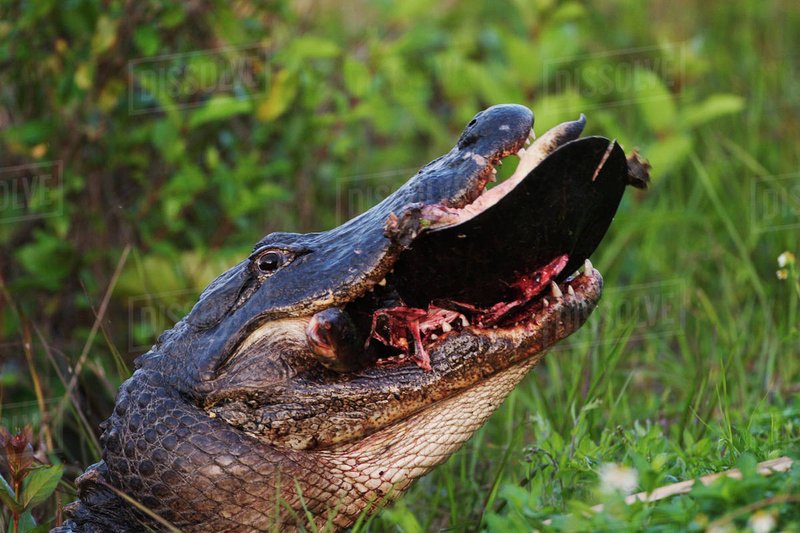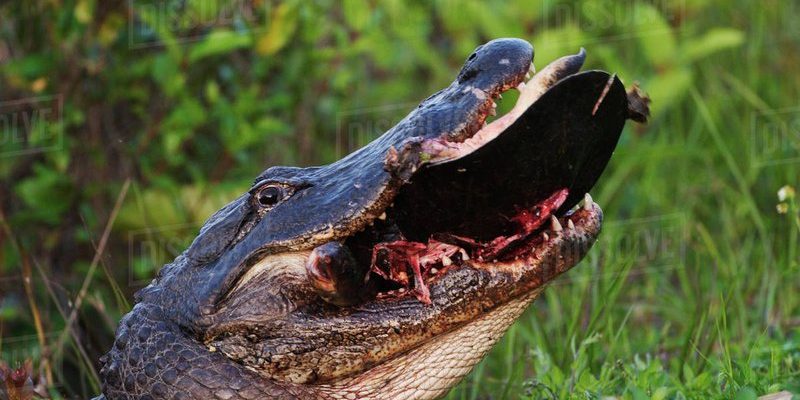
Understanding the Alligator Diet
American alligators are incredibly versatile eaters. Their diet mostly consists of protein-rich foods, allowing them to thrive in a variety of habitats. They’re opportunistic predators, which means they’ll munch on whatever’s available.
Here’s how their diet generally breaks down:
- Fish
- Birds
- Mammals (like deer and small rodents)
- Amphibians (like frogs)
- Reptiles (including other alligators)
You might be surprised to find out that these reptiles even enjoy a good snack of carrion—dead animals. This adaptability helps them survive even when food is scarce. Honestly, it’s almost like they have a buffet of options, and they get to choose what looks best!
The Role of Size and Age in Diet
Interestingly, what alligators eat often depends on their size and age. Juvenile alligators generally prefer smaller prey like insects, small fish, and frogs. As they grow, their appetite shifts, allowing them to take on larger meals.
Adult alligators, which can reach up to 13 feet long or more, have a much broader diet. They’re more likely to hunt larger animals like deer or even grab a wild pig if the chance arises. Picture this: a massive alligator lurking just below the water’s surface, waiting patiently for a deer to graze too close to the edge—nature’s ultimate game of hide and seek!
How Alligators Adapt Their Feeding Habits
The cool part is that alligators are excellent at adjusting their feeding habits based on their environment. For instance, in areas where fish are plentiful, they might focus more on catching fish rather than searching for larger mammals. This flexibility is key to their survival and helps them thrive in diverse habitats like swamps, rivers, and even coastal marshes.
You might wonder what would happen if fish populations dwindle. In that case, these clever hunters would simply switch to birds or small mammals. Their ability to adapt makes them incredibly successful predators.
Hunting Techniques of the Alligator
Let me explain how alligators hunt. They’re not just randomly flailing their mouths in the water; there’s a method to the madness! Alligators use several clever techniques to catch their prey, and each method highlights their skills as hunters.
One popular technique is known as the “Ambush” method. Alligators often lie in wait, hidden among the reeds and lily pads. When a potential meal approaches the water’s edge, the alligator explodes from its hiding spot with surprising speed, snapping its jaws shut. Imagine a stealthy ninja just waiting for the right moment—this is how an alligator operates!
Using the Element of Surprise
Another strategy involves using their tails. When they’re submerged, alligators can create small splashes on the surface to attract attention. Once a curious animal comes to investigate, they strike with lightning speed. This is where that element of surprise comes in. Just like that feeling of excitement when you pull off a great prank!
Their powerful jaws are another key asset. When they catch something, they often grab it with a powerful bite, then use a technique called the “death roll.” This involves spinning in the water to tear off pieces of meat. The first time you hear about this might make you cringe, but it’s just the way they make sure they can handle their meal.
The Importance of Hunting for Ecosystem Balance
Alligators play a significant role in maintaining the balance of their ecosystems. As top predators, they help control the populations of various species, which in turn supports healthier ecosystems.
For example, by preying on weak or sick animals, alligators help keep the overall health of the population strong. Think of it as nature’s way of ensuring survival of the fittest. If alligators didn’t hunt, other species could become overpopulated, leading to issues like habitat destruction.
Impact on Other Species
You might be wondering how alligators affect fish populations. Since they eat both fish and birds, they help manage those populations as well. This balance is essential for the health of aquatic habitats—too much of one species can lead to dramatic changes in the ecosystem.
By keeping populations in check, alligators support biodiversity, which is crucial for a thriving environment. They’re not just killing machines; they’re vital players in the intricate game of life.
Challenges Faced by American Alligators
Despite being apex predators, American alligators face several challenges in the wild. Habitat loss due to human activities like urban development, agriculture, and pollution has a significant impact on their populations.
Additionally, climate change affects their habitats and food sources. For instance, rising temperatures can alter the availability of prey in wetlands where alligators thrive. This might lead to increased competition for food, affecting their hunting success.
Human Interactions
Let’s touch on the complex relationship between alligators and humans. In some areas, alligators are hunted for their meat and hides, while in others, they’re viewed as pests. This can lead to conflicts when alligators stray too close to human settlements.
Understanding alligator behavior can help reduce these conflicts. Awareness and education can change how we interact with these powerful reptiles. After all, striking a balance is essential for both humans and alligators.
The American alligator is a fascinating creature, offering us a glimpse into the ancient world of reptiles. From their diverse diet to their clever hunting techniques, these apex predators have adapted over millions of years to become efficient hunters in their habitats. They’re not just eating machines; they play a vital role in maintaining the balance of their ecosystems.
By understanding what alligators eat and how they hunt, we gain a greater appreciation for these incredible animals and their importance in nature. So, next time you hear about an alligator, think about the intricate dance of life happening beneath the water’s surface and the crucial role they play in the circle of life.

